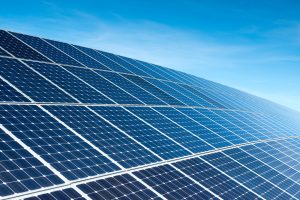Despite abundant resources, Indonesia has struggled to make headway in developing renewable energy such as wind and solar power. Despite an official policy goal of sourcing 23 percent of its energy from renewables by 2025, the actual construction of on-grid renewable energy has moved at a glacial pace and accounts for only a fraction of overall electricity generation.
As I discussed in a recent feature for The Diplomat magazine, there are many reasons for this, but perhaps the most important is that Indonesia’s political economy is firmly structured around fossil fuels. Not only is coal an important export, with a powerful political and commercial footprint, but the state-owned electric company PLN owns and operates a large number of fossil-fuel power plants, around 70 percent of Indonesia’s installed capacity. That creates a major impediment to onboarding renewable energy, especially if it’s developed by private companies, because the addition of more solar will chip away at PLN’s existing market share.
In a textbook example of a fully liberalized energy market, the generating and transmission functions will be unbundled and run by different entities. Theoretically, this eliminates the misaligned incentives that can develop in a vertically integrated structure, such as PLN’s, where the grid operator is also producing the majority of the power. If these functions were unbundled, the grid operator has a simpler mandate: to invest in grid infrastructure and source the cheapest, most reliable electricity from a competitive pool of generating companies.
But unbundling won’t work in Indonesia, because PLN is simply too powerful and too embedded in the structure of the market. That’s why schemes designed around private renewable energy developers selling their electricity to PLN have not had much success. These market mechanisms, left to their own devices, struggle to be effective given the underlying political economy of Indonesia’s power sector.
All this begs the question, is there anything that will work? A large solar farm currently under construction, the first of its kind in Indonesia, could provide some answers.
According to the Institute for Energy Economics and Financial Analysis (IEEFA), the Cirata solar farm in West Java is expected to be complete in 2022. At a cost of 1.8 trillion Indonesian rupiah (approximately $126 million at current exchange rates), the plant will eventually have a capacity of 145 MW, making it the biggest on-grid, utility-scale solar project in Indonesia to date. PLN has agreed to purchase power generated by the plant for 5.8 cents per kilowatt hour, which is in the ballpark of what it pays to coal-fired power plants. In other words, it costs PLN as much to buy electricity from coal-fired plants as it will from this solar plant, undercutting one of coal’s supposed advantages, which is its lower cost. If everything could simply be reduced to a matter of prices determined by supply and demand, we would see a clear path forward here for solar to displace coal, since as it gets cheaper PLN will want to buy more of it to slash operating expenses.
But that’s not exactly what we see, and things really get interesting when we look at who is going to operate the project. PT PJB Masdar Solar Energi, the developer, is a joint venture between an Abu Dhabi company and a subsidiary of PLN. As the grid operator, PLN has thus entered into a contract to purchase solar power generated by a firm which it also partially owns. This is probably not something you’ll find in a book about efficient market design, but given the incentive structure that actually exists in Indonesia’s energy markets, it may be the most realistic path for making headway on solar power in the near-term.
Either PLN inserts itself into the production of renewable energy as an equity partner, or Indonesia’s solar and wind power will continue to languish. And it seems this is a reality some major players are starting to reckon with. Singapore’s Sembcorp Industries recently announced plans to build solar farms in nearby Batam, from which Singapore will import electricity. The projects will be developed in partnership with PLN’s Batam subsidiary, echoing the structure of the Cirata deal and making the state-owned power company an active partner in the undertaking.
Free market purists won’t like it, but I think if Indonesia is going to get serious about solar and other renewable energies, then more deals are going to have to follow a similar template and give PLN some financial incentive to see these projects come to fruition. The alternative is that the country’s renewable energy ambitions may remain stalled for quite some time.

































